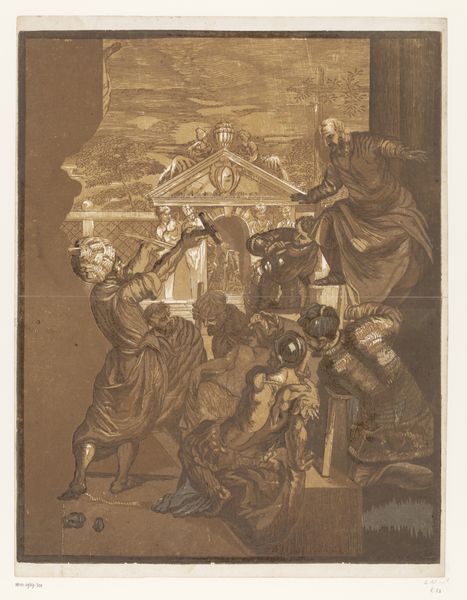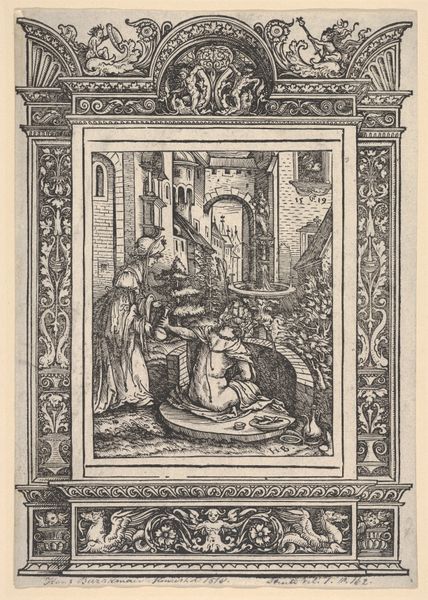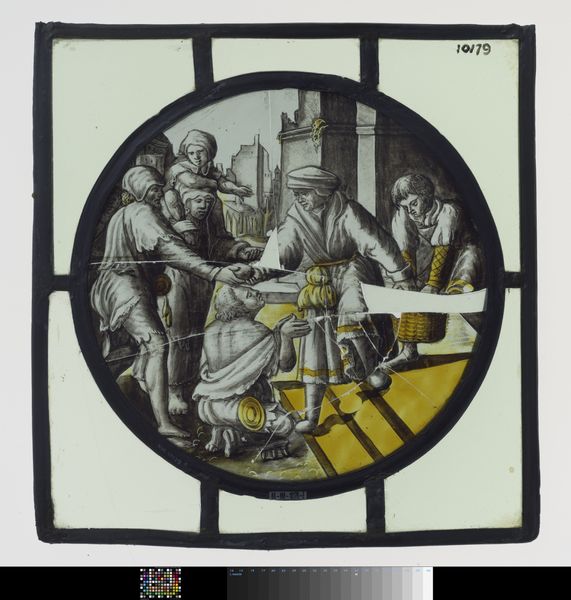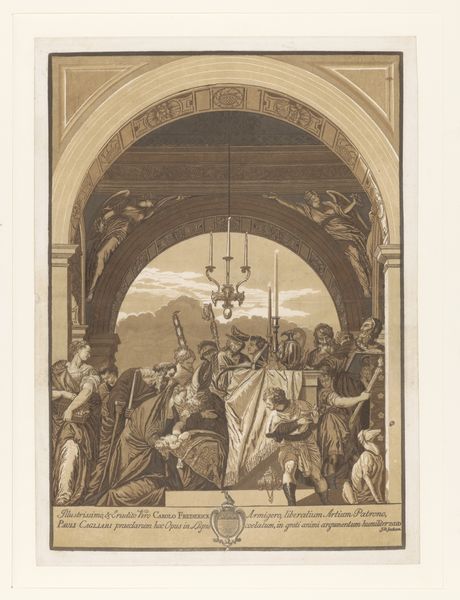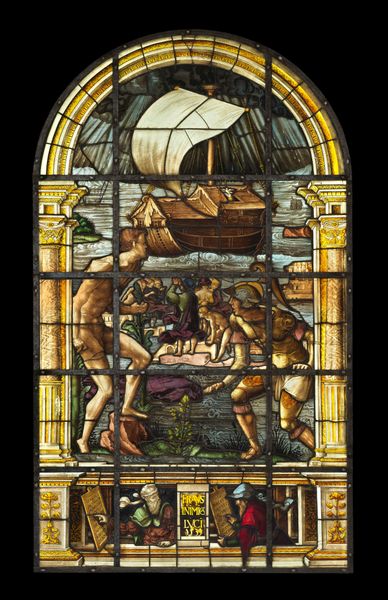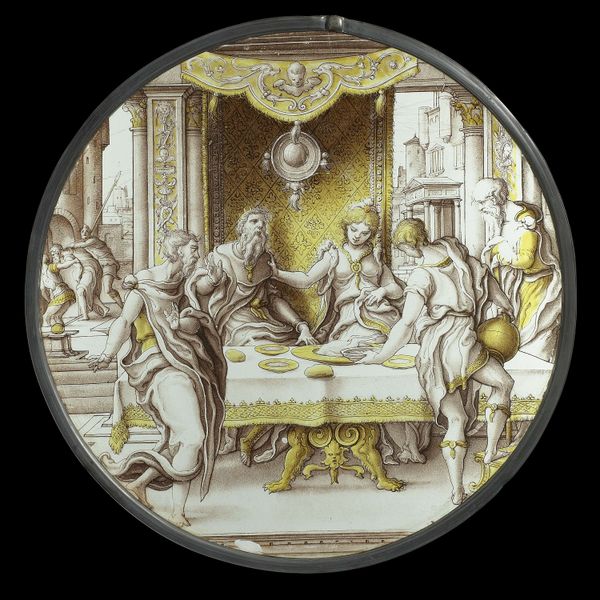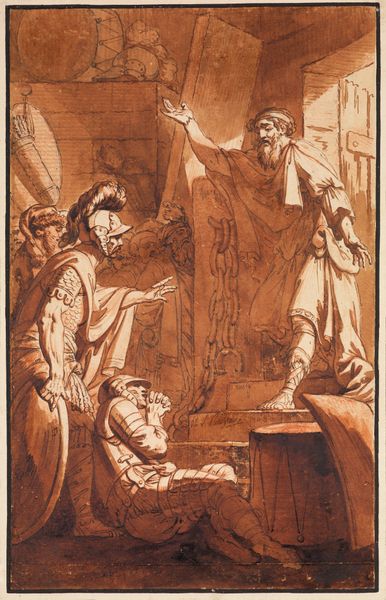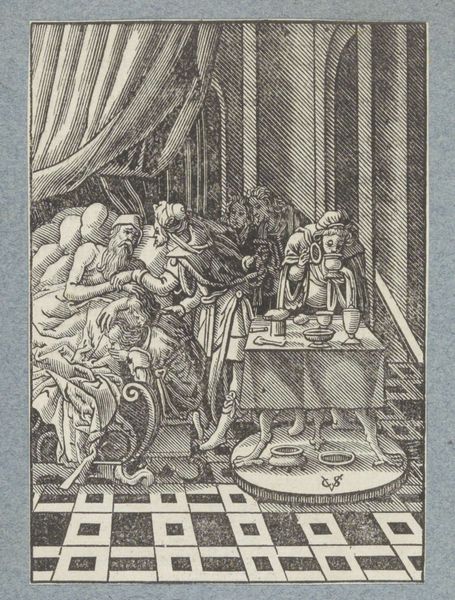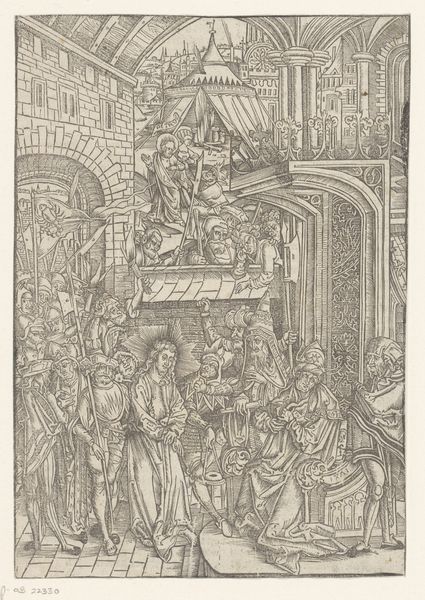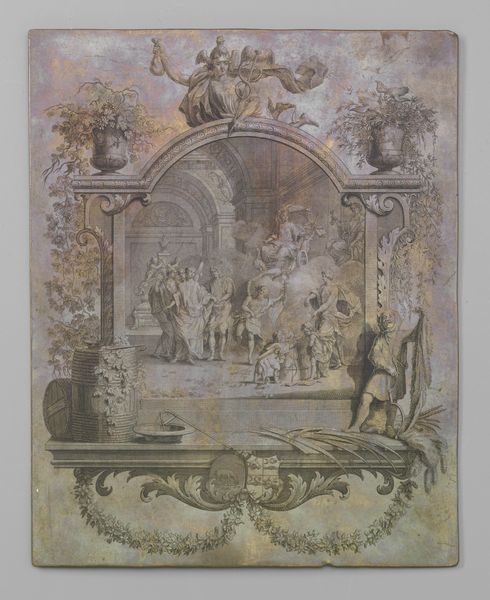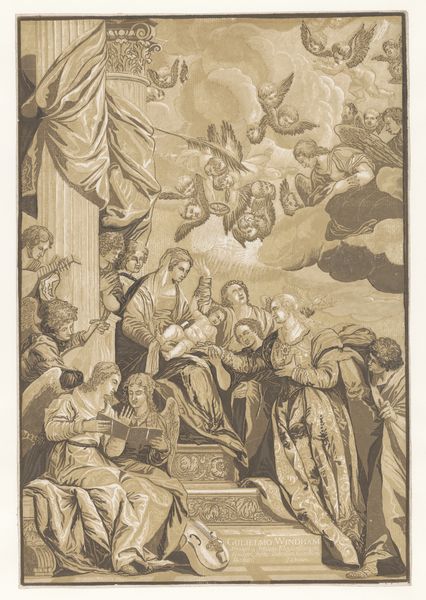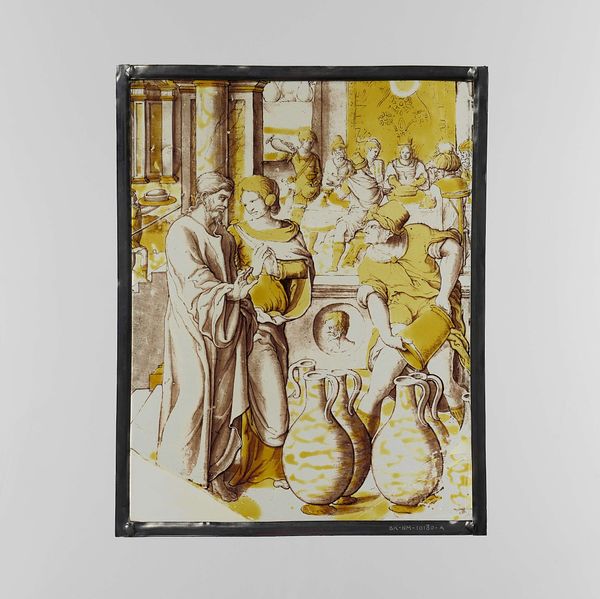
tempera, glass
#
narrative-art
#
tempera
#
figuration
#
glass
#
history-painting
#
northern-renaissance
Dimensions: width 21 cm, height 38 cm
Copyright: Rijks Museum: Open Domain
Editor: So, this artwork is *Bruiloft te Kana*, or *The Wedding at Cana*, made around 1550 by Jan Swart van Groningen. It's a tempera on glass piece, currently housed here at the Rijksmuseum. It strikes me as surprisingly intimate, considering it depicts a miracle! The everyday activities sort of overshadow the…divine aspect. What catches your eye, Professor? Curator: Ah, a wedding feast, yes! And what catches *my* eye? Well, isn’t it just overflowing with…life, wouldn’t you say? A boisterous celebration contained within a, rather unusual, glassy frame. Jan Swart really packs in the detail. Have you noticed how he plays with space, layering figures upon figures, drawing our gaze to various pockets of action? Do you feel like you could step right into the party? It is a wonder this image survived. Editor: I do see that! All the different depths in the glass give it an airy feel. But do you think it makes the story of the miracle less central? Because the eye goes straight to the foreground servers... Curator: Less central, perhaps, to *our* contemporary eyes, yes. However, for the Renaissance viewer? Remember, art like this often served a didactic purpose. Swart isn’t just illustrating the biblical narrative. He’s creating a world, an immersive experience where the miracle feels immediate, and truly within the viewer’s own reach, a shared human experience. Imagine, just for a moment, seeing *Bruiloft* not just as an art object, but as a beacon, wouldn't it make you marvel and contemplate a different time? Editor: That's really interesting, that completely changes how I perceive it! Instead of a scene, it's more of an…invitation. A doorway to wonder! Curator: Precisely! And that, my dear editor, is often the greatest miracle of art itself! Editor: Thanks, that helps me understand so much better, looking at it in a period-centric way, it opened a world.
Comments
No comments
Be the first to comment and join the conversation on the ultimate creative platform.

